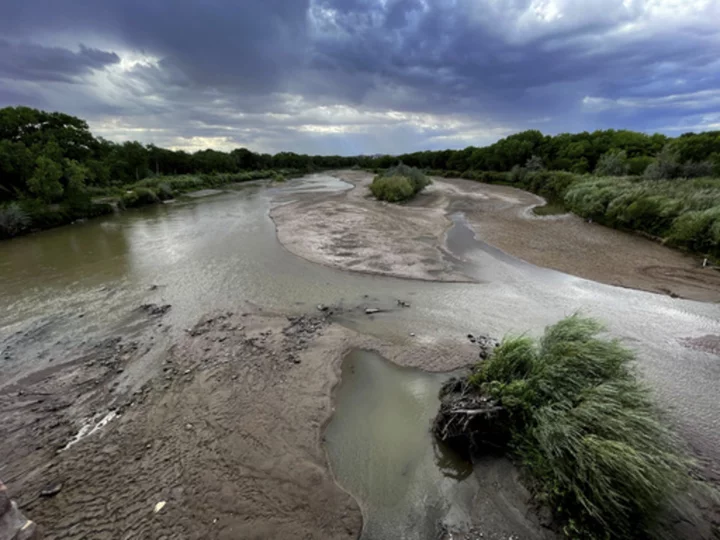ALBUQUERQUE, N.M. (AP) — The ongoing lack of rain and hot conditions have left one of North America's longest rivers in dire shape again, prompting water managers on Thursday to warn farmers in central New Mexico who depend on the Rio Grande that supplies will be drying up in the coming weeks.
That means stretches of the river through the Albuquerque area are expected to go dry — much like last year.
Water managers and fish biologists at the Middle Rio Grande Conservancy District and the Bureau of Reclamation say they're working to mitigate the effects on the endangered silvery minnow — a shimmery, pinky-sized native fish.
Water users in the Middle Rio Grande have been given notice to anticipate changes in availability and delivery schedules soon.
Due to a higher-than-normal irrigation demand and lower than expected natural river flow, the conservancy district began releasing water on July 17 from the San Juan-Chama Project, which brings water from the Colorado River Basin into the Rio Grande Basin via a system of diversion dams, tunnels, channels and other infrastructure. About 40% of the current irrigation supply is from project storage releases, with the rest from natural river flow.
Irrigation district officials expect water from the project to run out before Aug. 23, leaving them to rely solely on natural flows to continue making water deliveries through the fall.
“The lack of rainfall is difficult on its own, coupled with the challenges of not being able to store water for summer releases, is disheartening, but we are doing our best to work with water users in the middle Rio Grande Valley to deliver what is available,” Jason Casuga, the irrigation district's chief executive, said in a statement.
The Bureau of Reclamation will release water to supplement flows in cooperation with the irrigation district and the U.S. Fish and Wildlife Service to target specific areas of the river with known silvery minnow habitat and to manage the rate of anticipated river drying.
The Rio Grande went dry in Albuquerque for the first time in four decades in August 2022 due to persistent drought.
Over the past 20 years, the Bureau of Reclamation has leased about 700,000 acre-feet — or 228 billion gallons — of water to supplement flows through the Middle Rio Grande for endangered and threatened species.
The silvery minnow has been listed as endangered since 1994. It inhabits only about 7% of its historic range and has withstood a century of habitat loss as the nearly 1,900 mile-long (3,058-kilometer) river was dammed, diverted and channeled from Colorado to New Mexico, Texas and northern Mexico.

